ArKoH
About This Game
ArKoH is a single player online game supporting the learning in the maritime industry, especially in harbours and has been developed in the context of the ArKoH project. http://www.arkoh.de/. The objective of the game is to familiarize players with typical operations found in a harbour setup. The player is introduced into a port scenario and collects points by answering questions. During the course of the game so-called jokers support the player in finding the right answers. Players can choose their role (e.g. stevedore, crane operator) and the difficulty level (beginner, intermediate, expert) before diving into the gameplay. After completing the game, players can compare to each other through a highscore list. ArKoH also offers a duelling mode in which two players compare directly with each other by answering three selected questions. Game designers are supported by an editor, which allows the creation and maintenance of ArKoH game scenarios.
Keywords
Single Player Online game, harbours, demographic change, attractive port industry
Application field
Port Industry
Learning goals
Make the development of competence in the working environment of the port industry attractive. Future development in the manufacturing and installation of offshore components and other port related activities.
Target group
Port/Maritime Industry
Number of Players
ArKoH is a single player game
Platform
- ArKoH follows a server-client model.
- The server is connected to a network/internet is running the NewAcademy LMS and special scrips for the ArKoH game.
- The client requires no special software except a Web browser.
- A PC with currently popular standard equipment is absolutely sufficient for use.
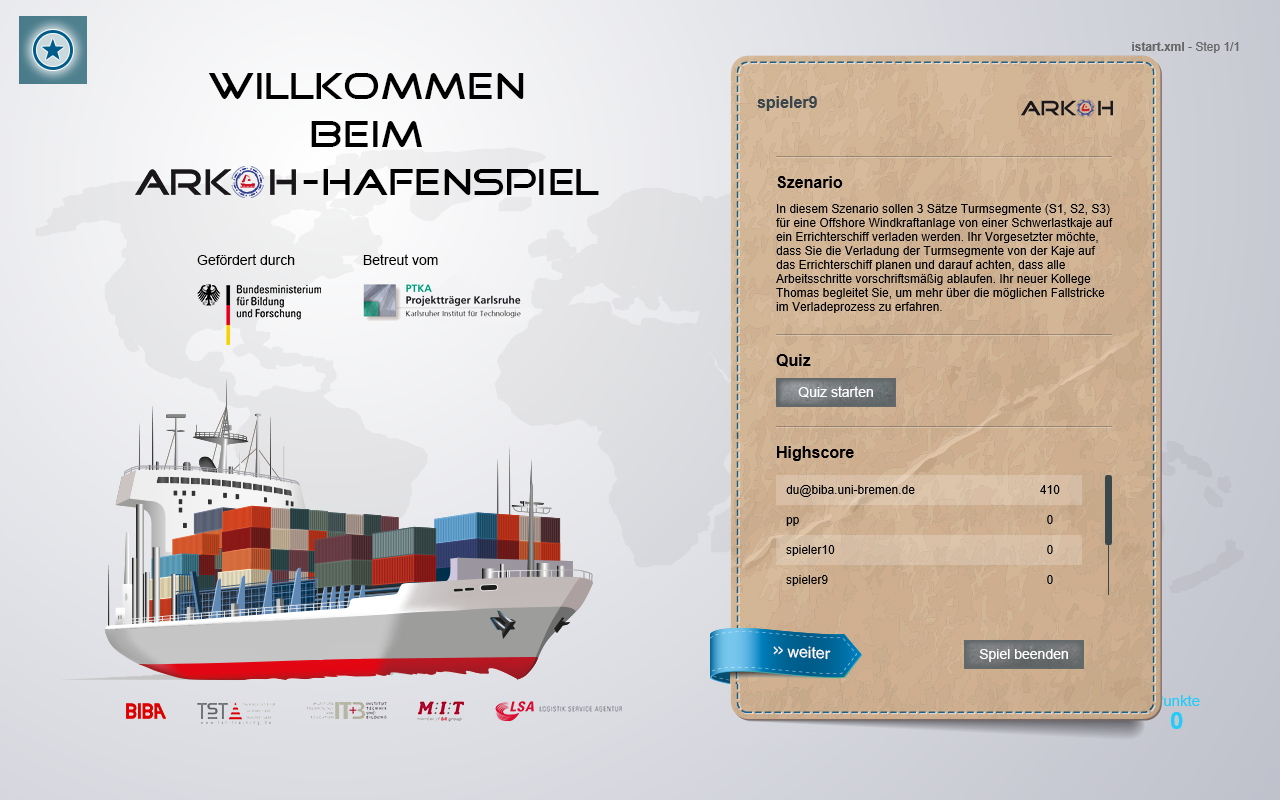
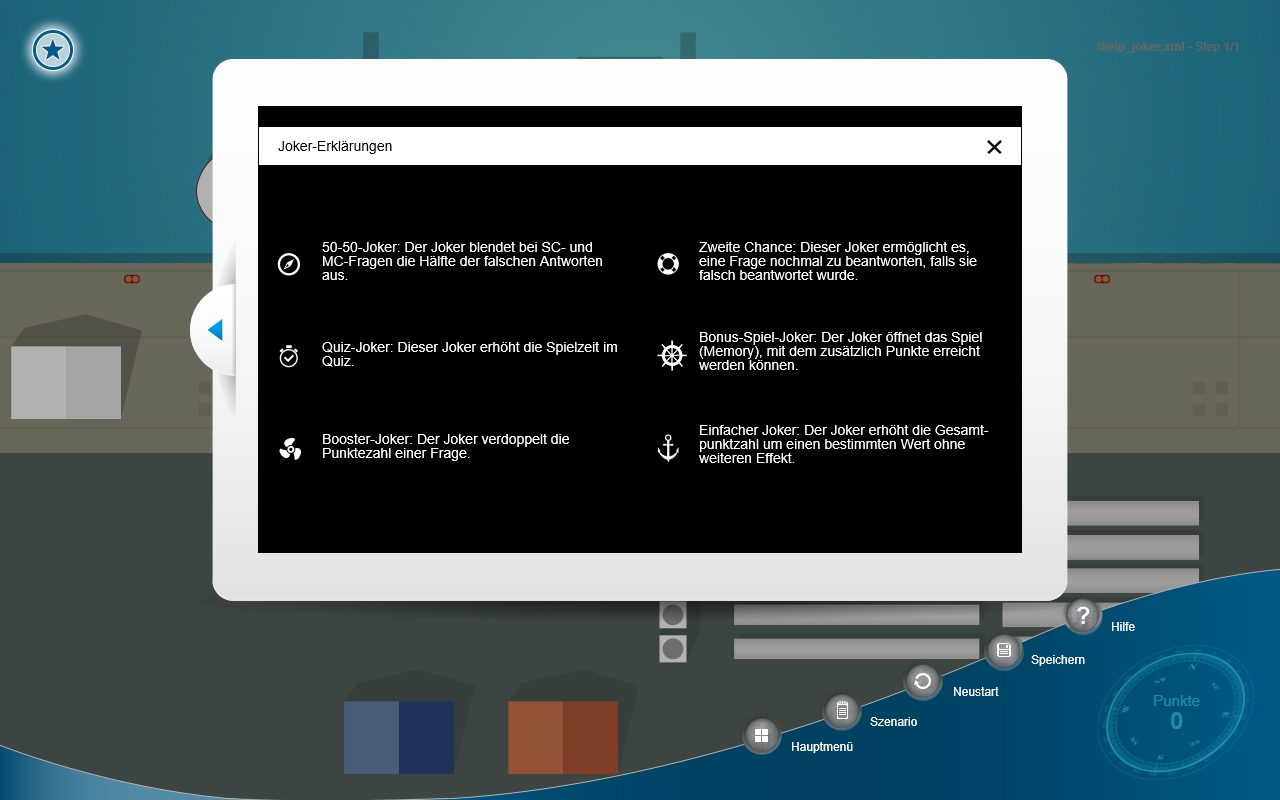
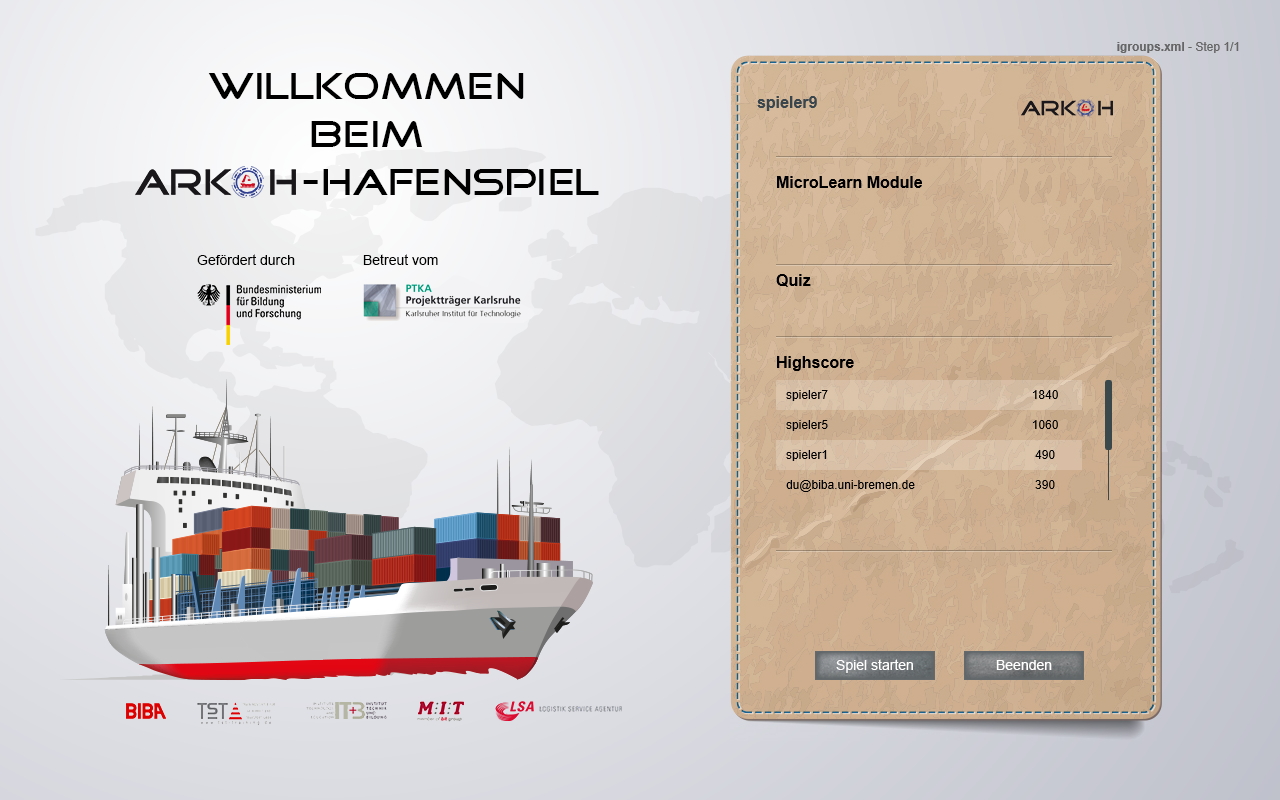
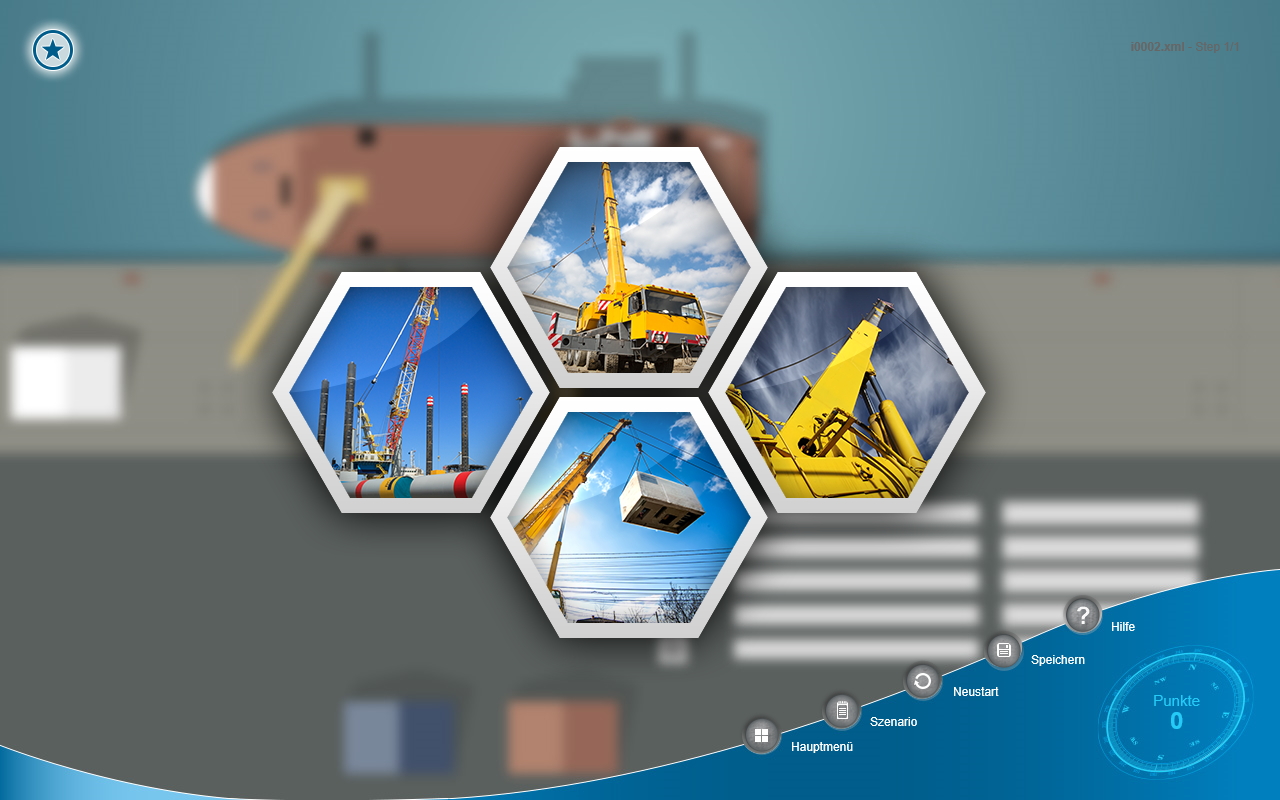
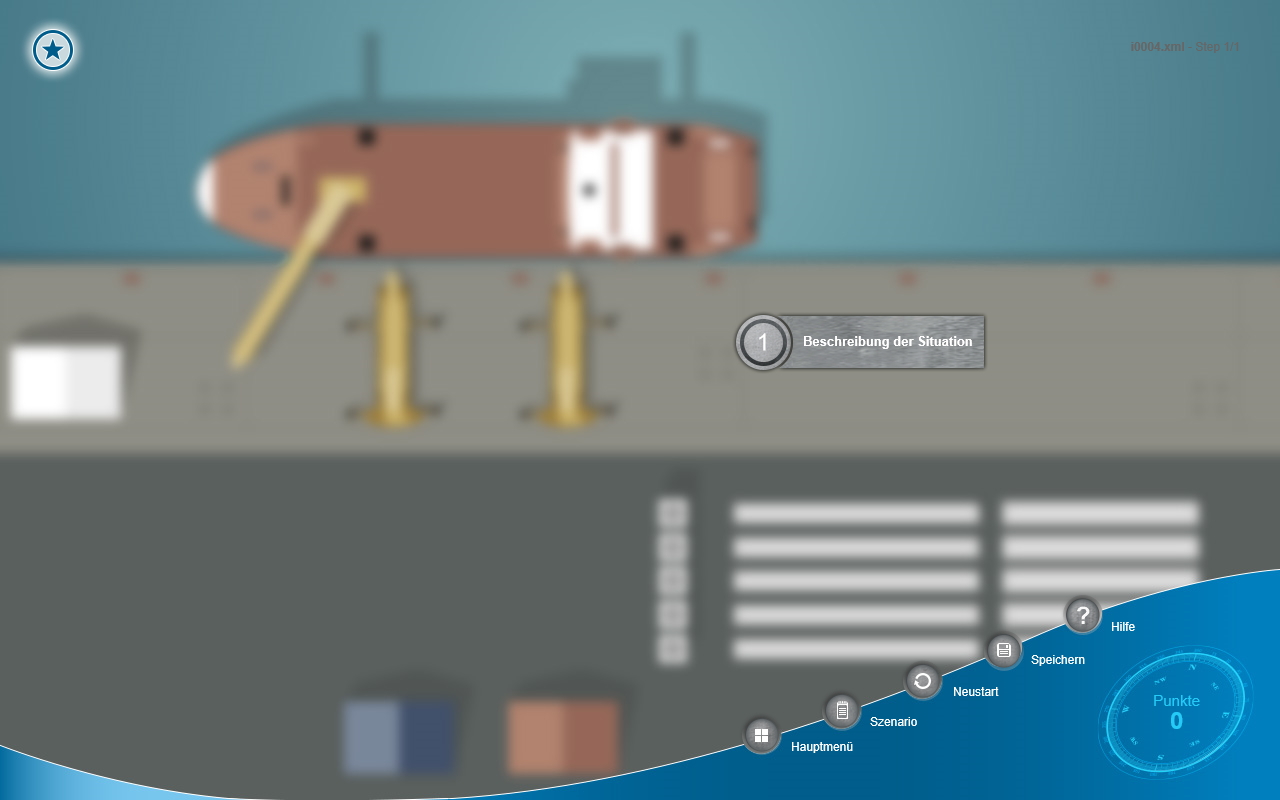
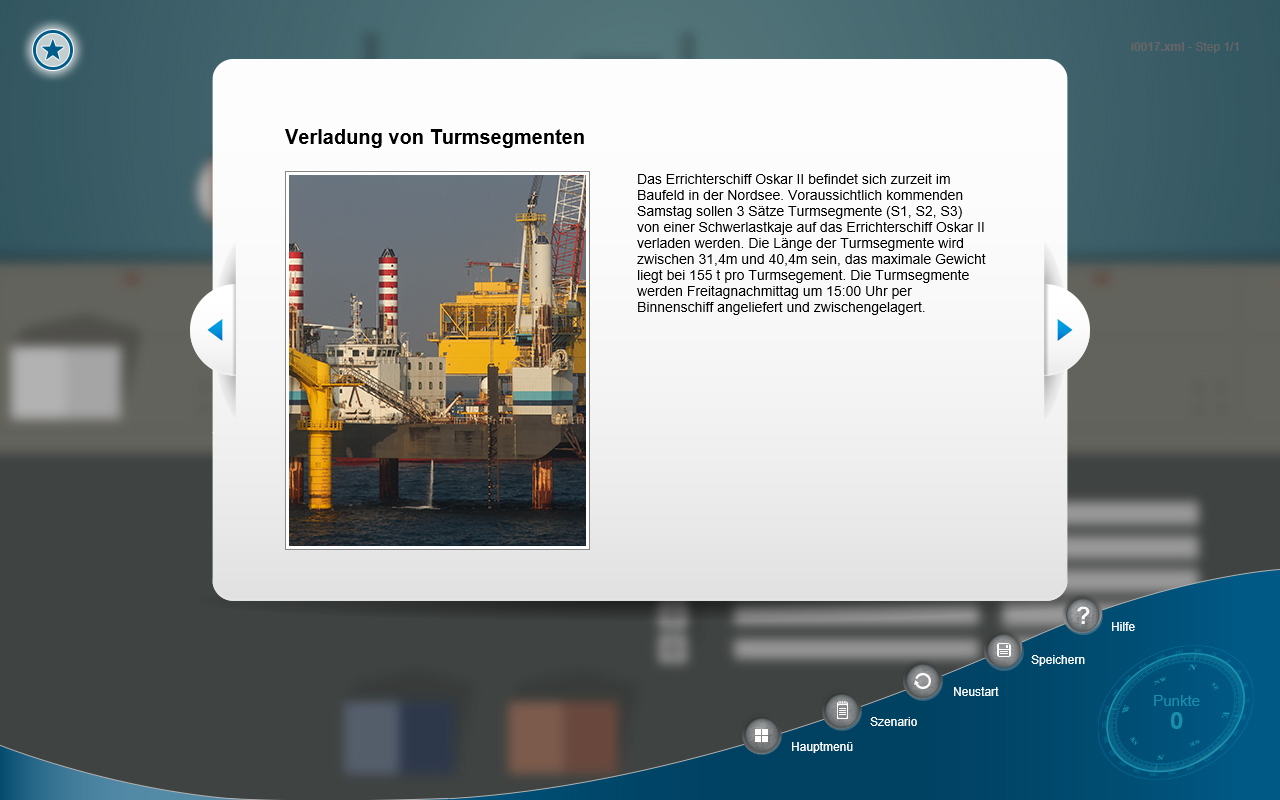
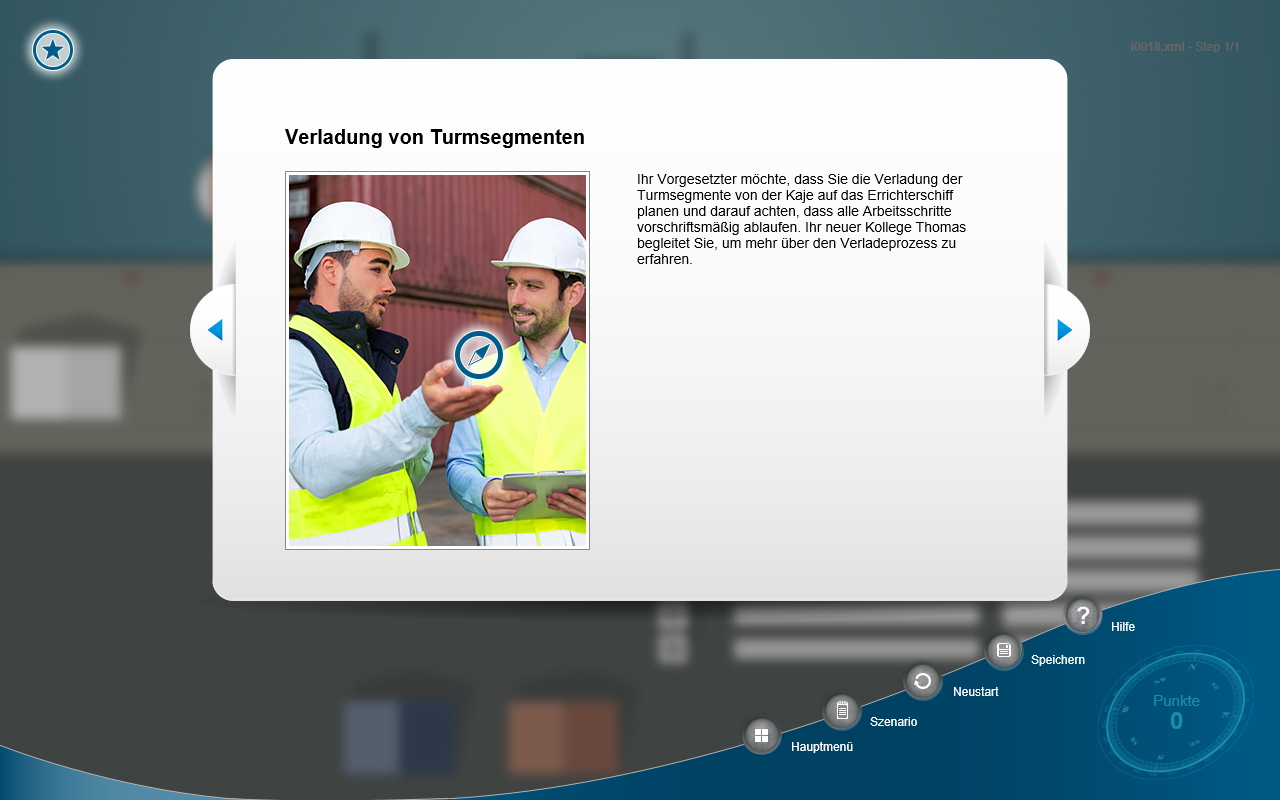
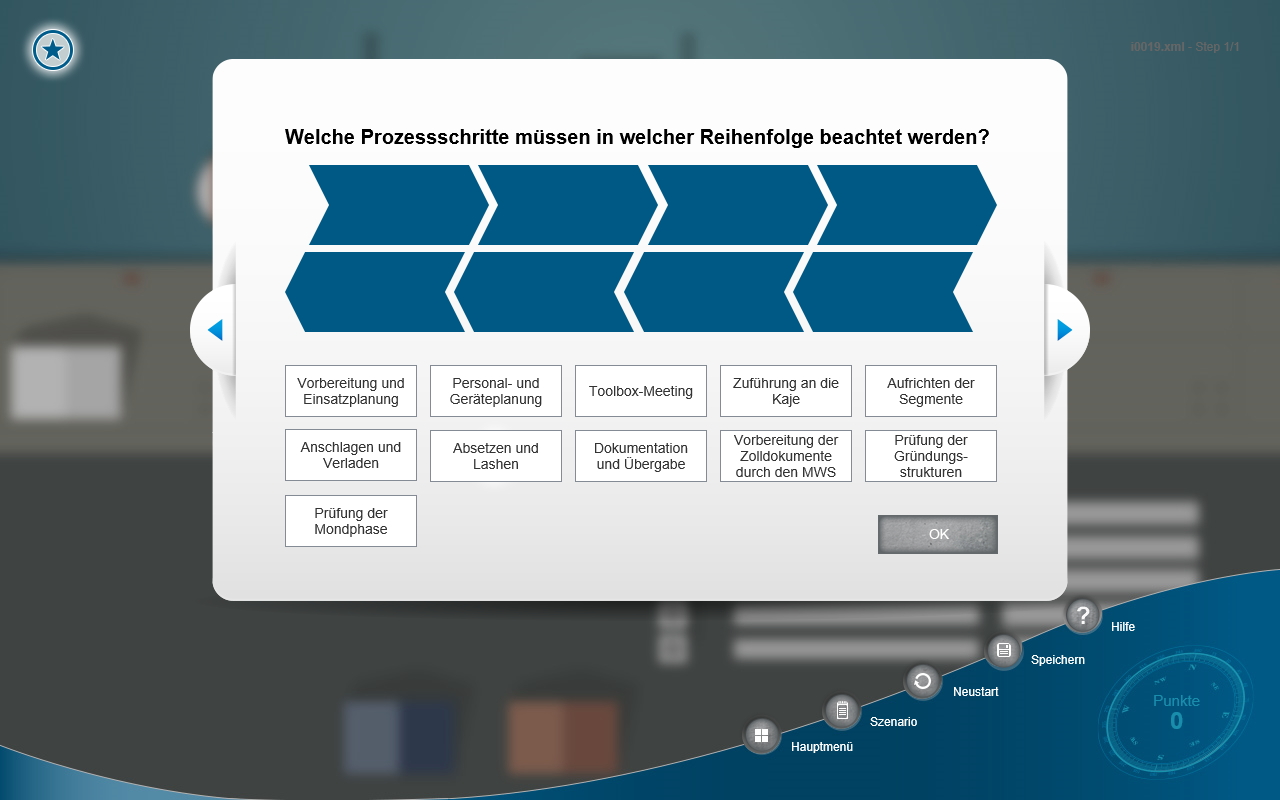
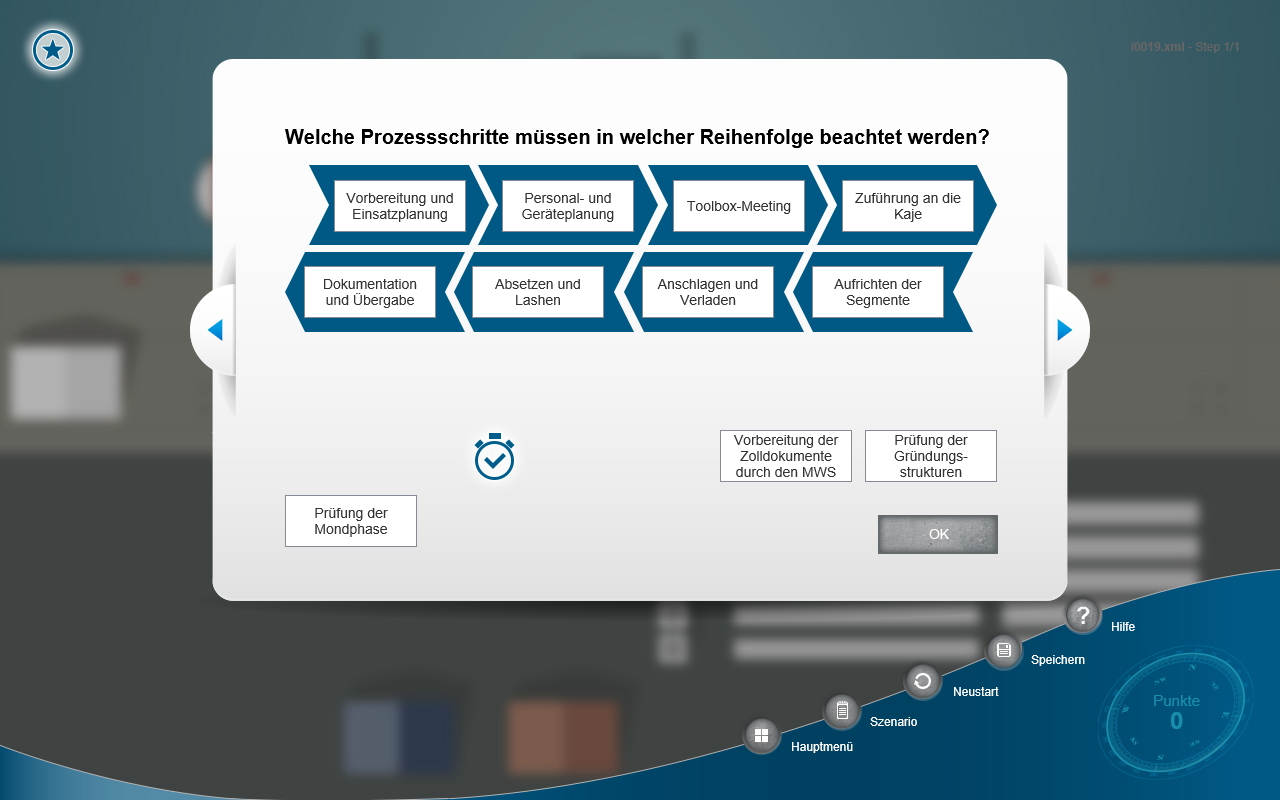
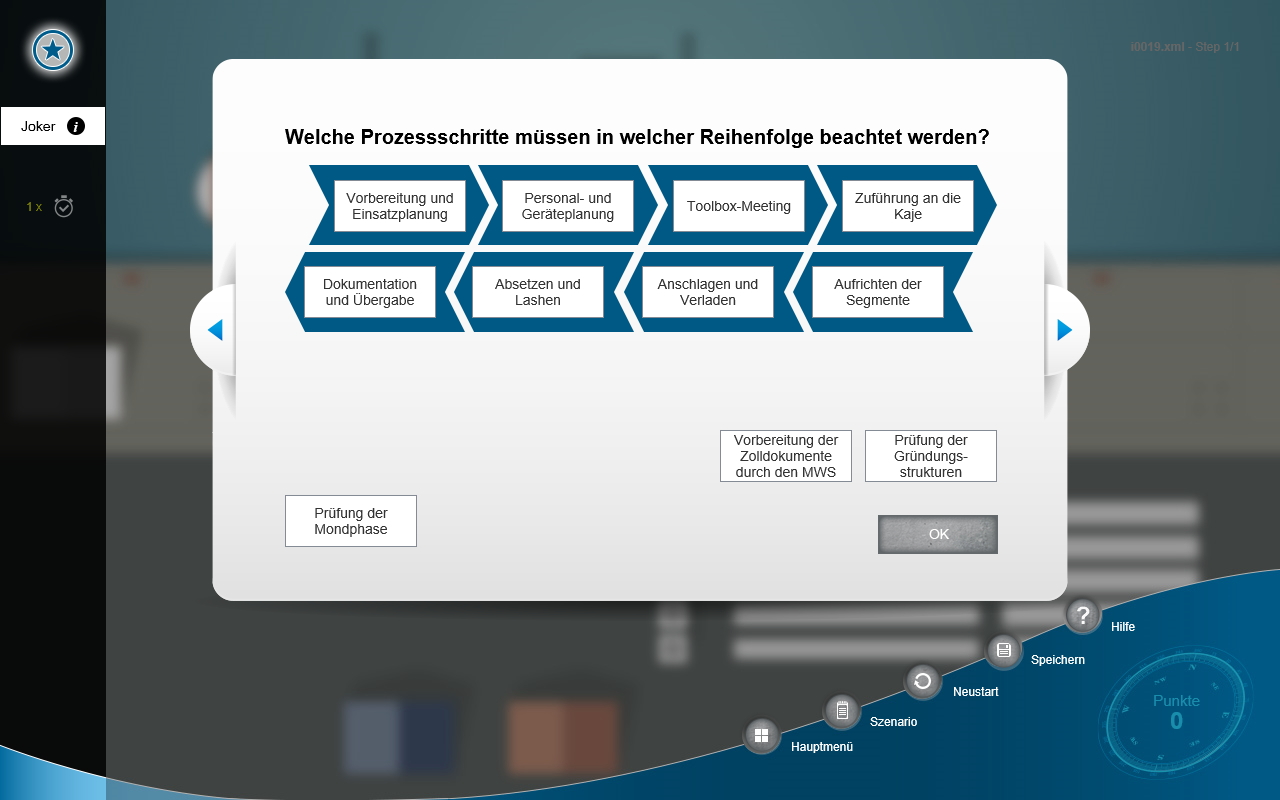

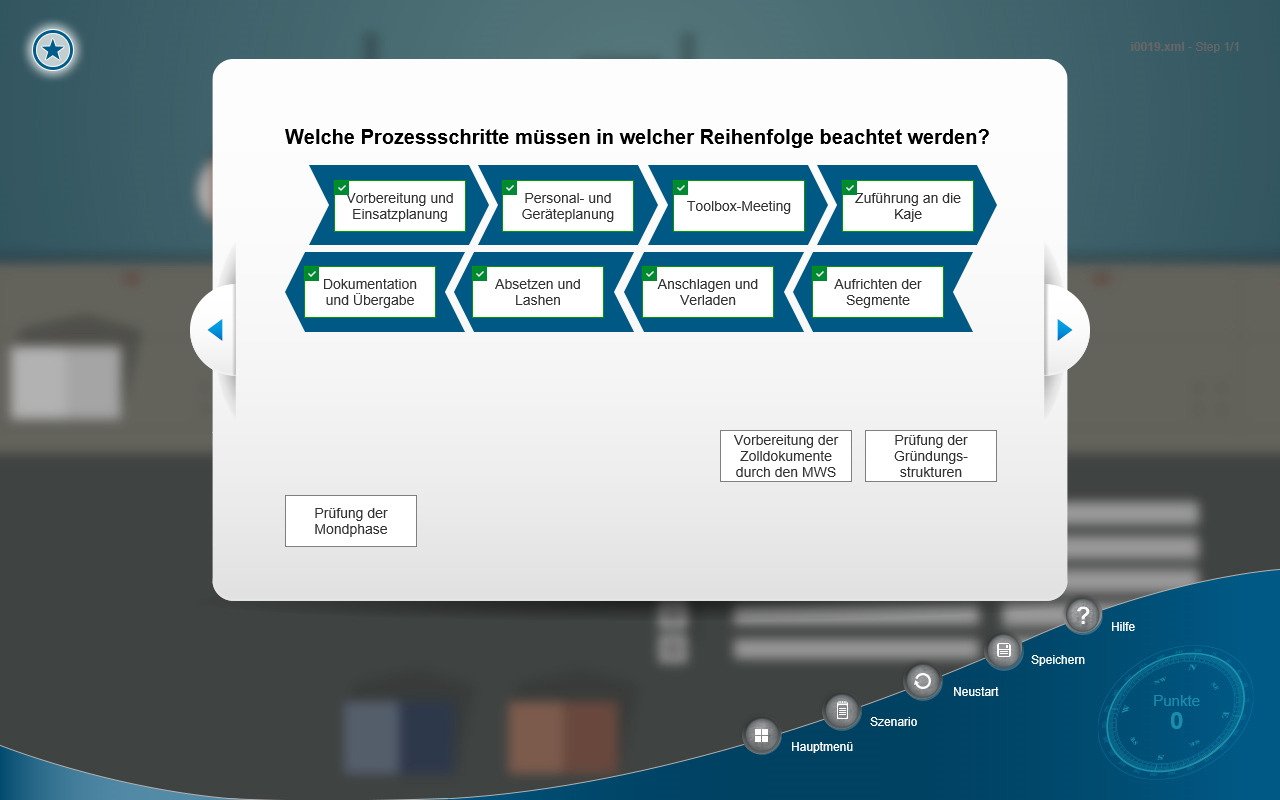
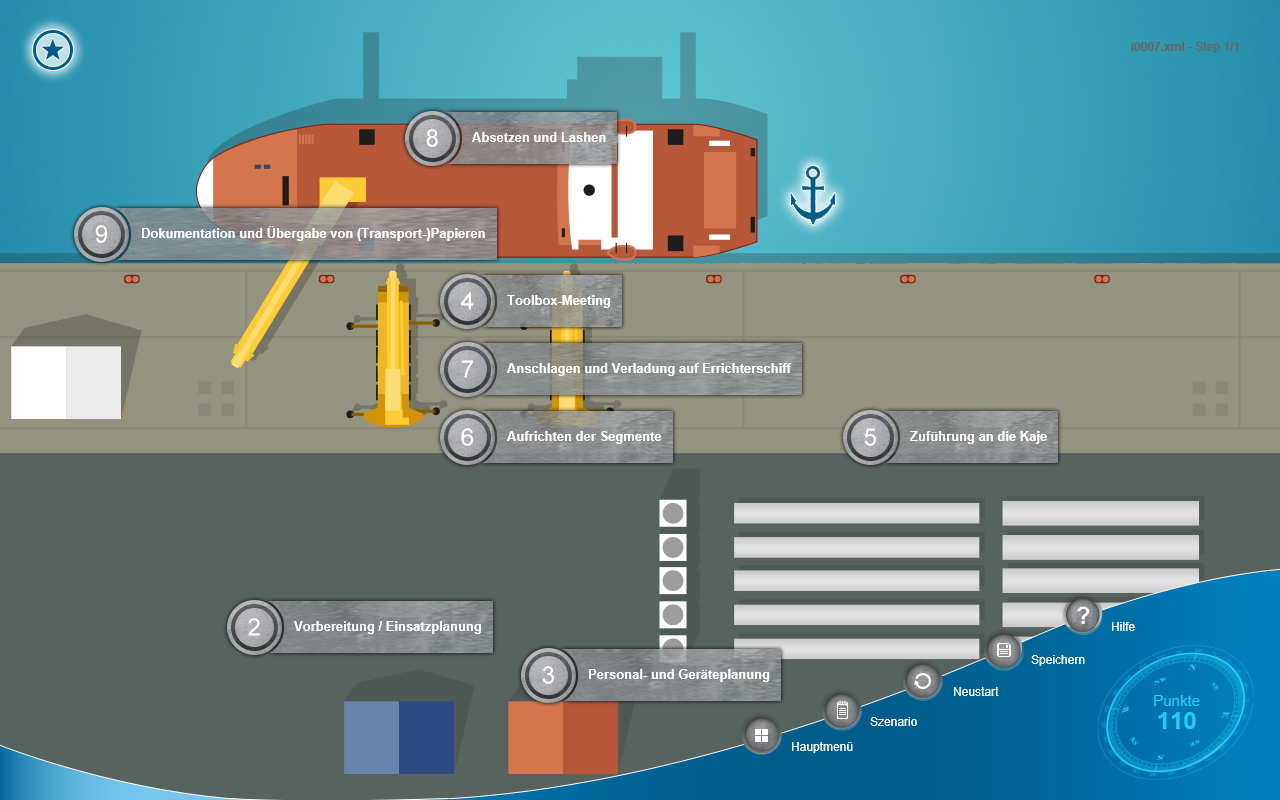
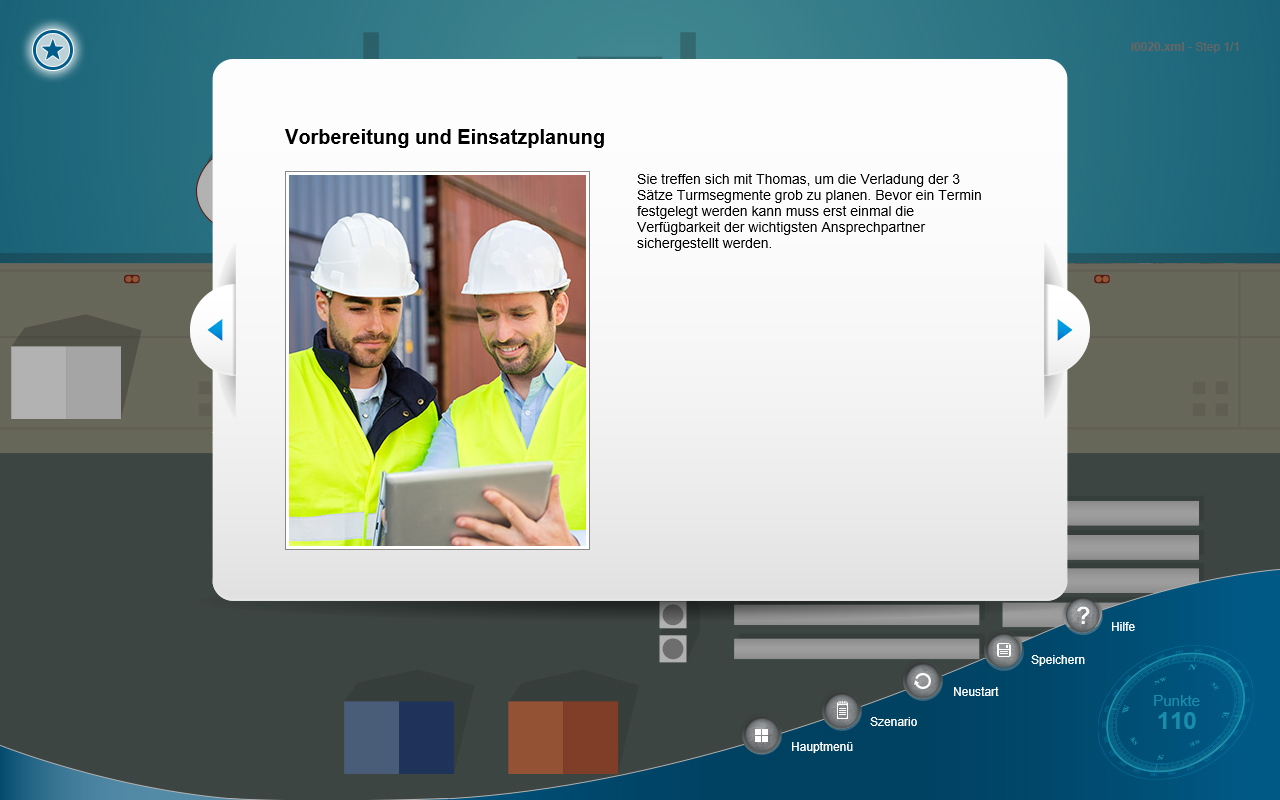
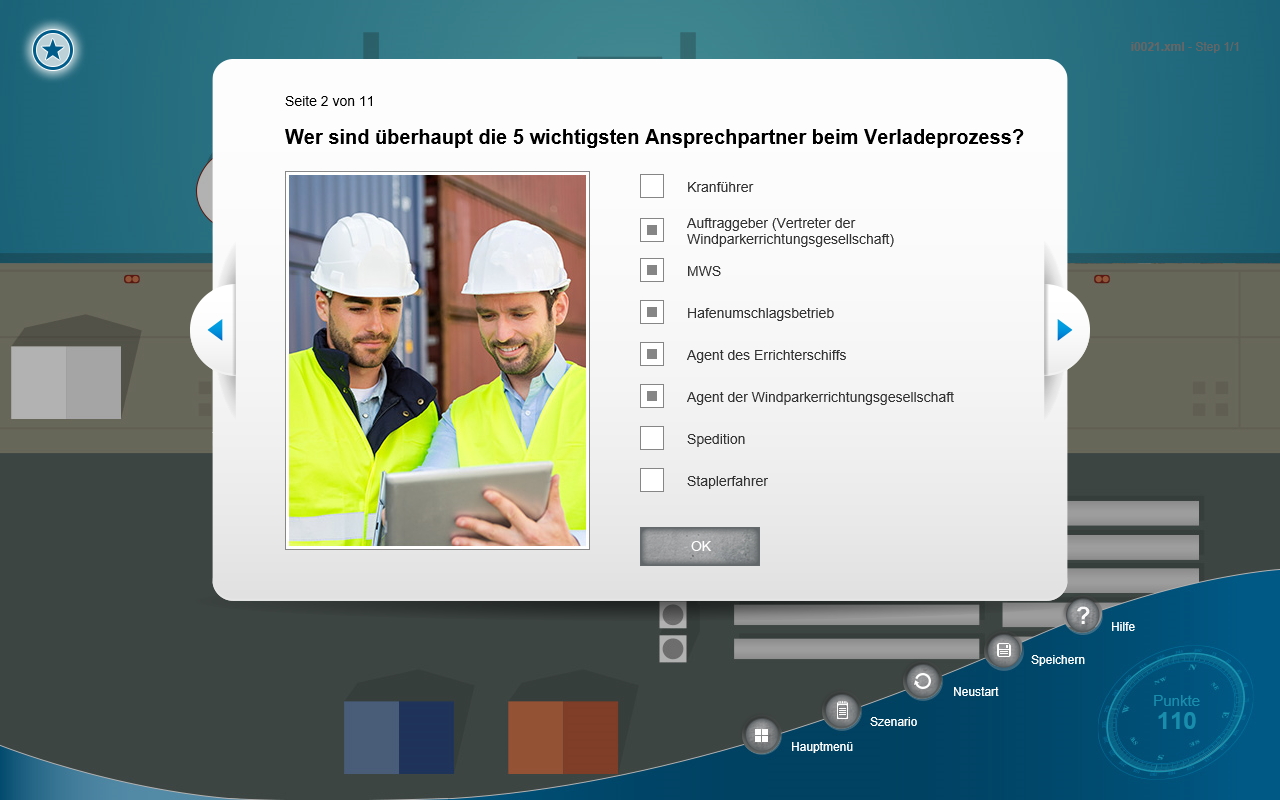
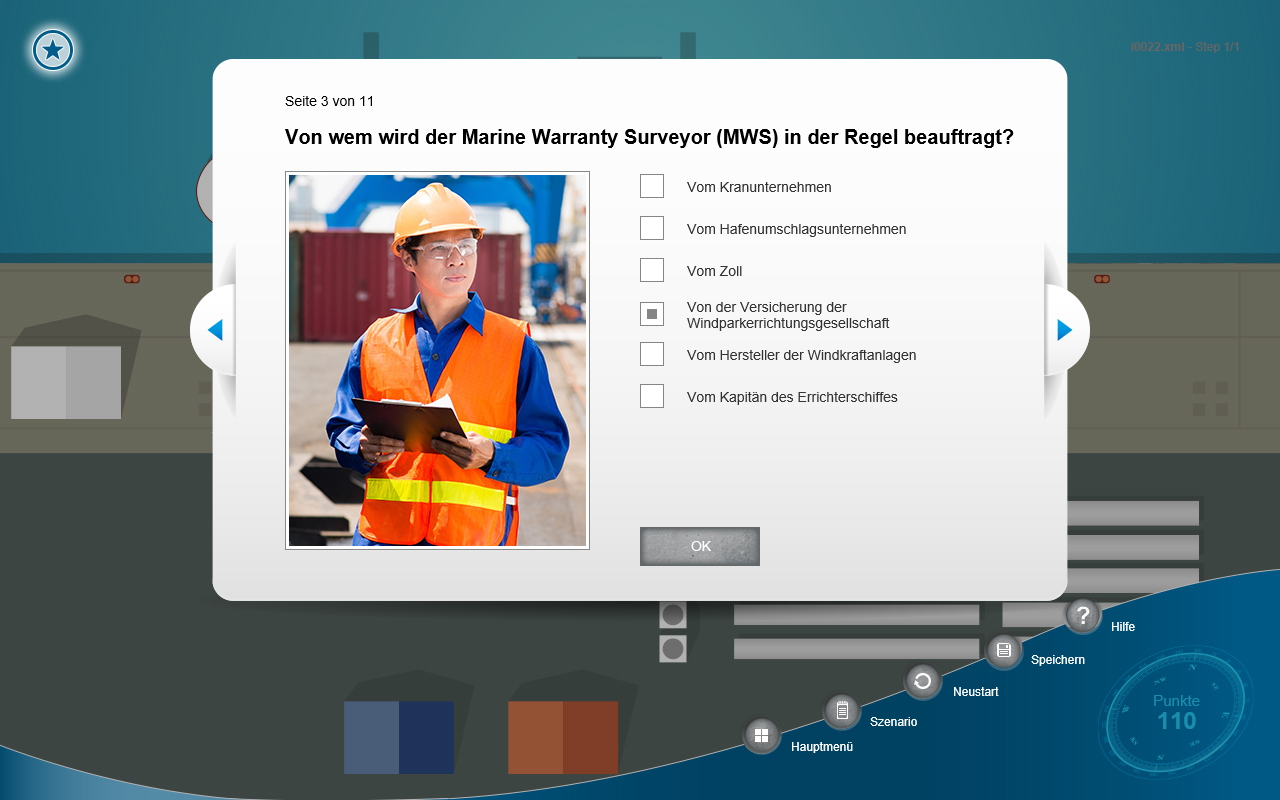
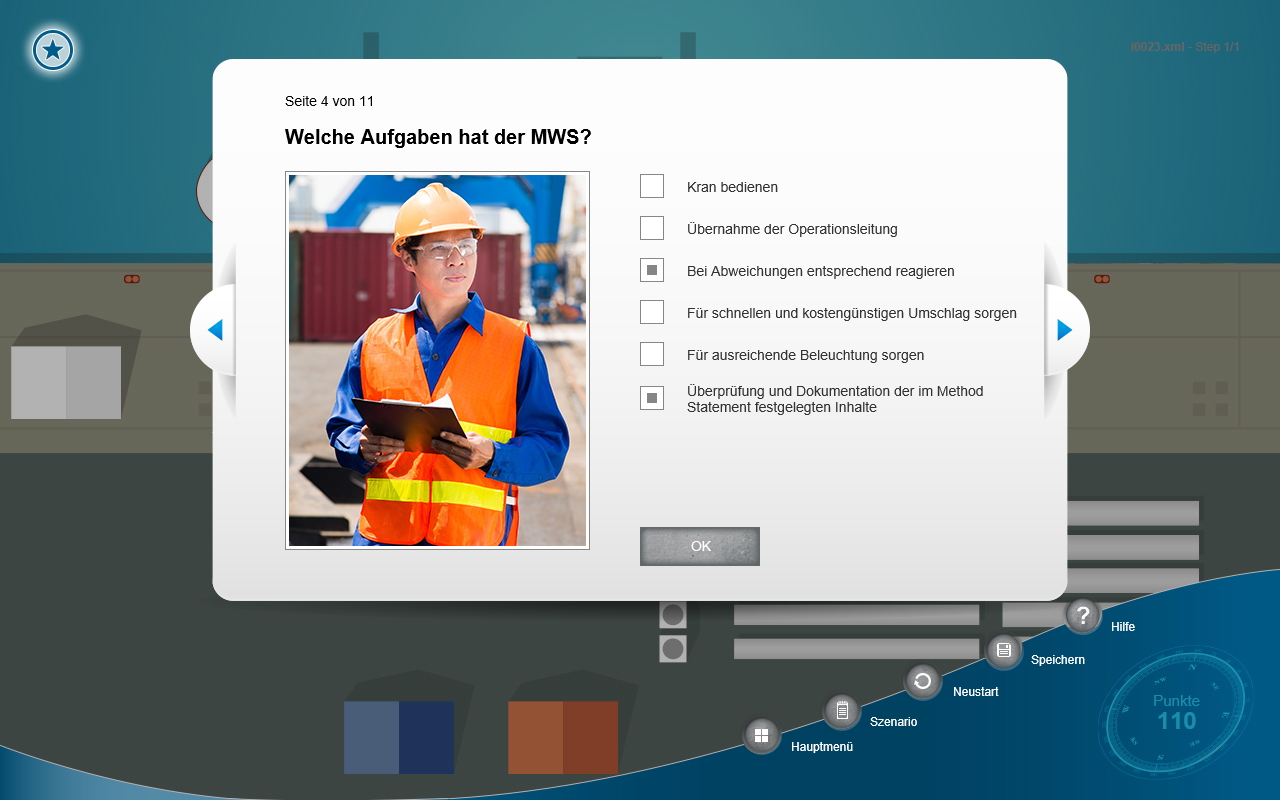
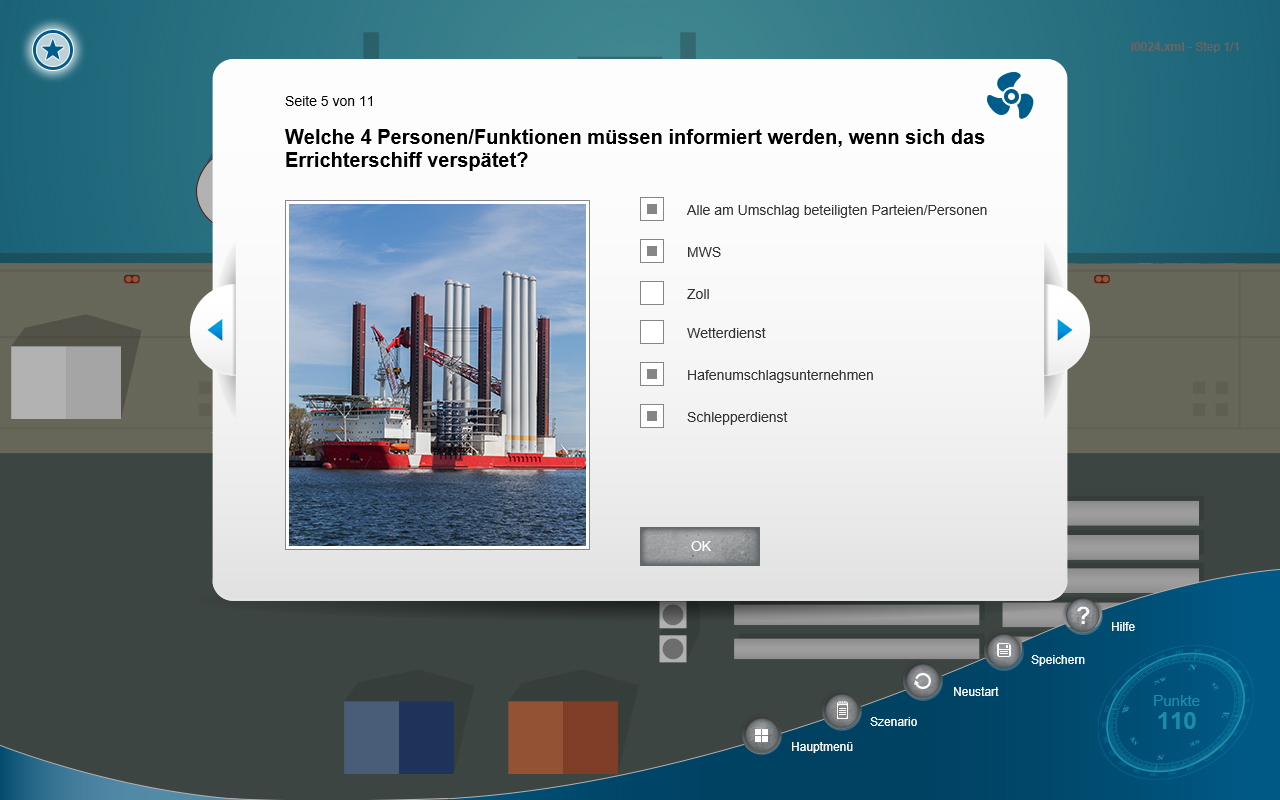
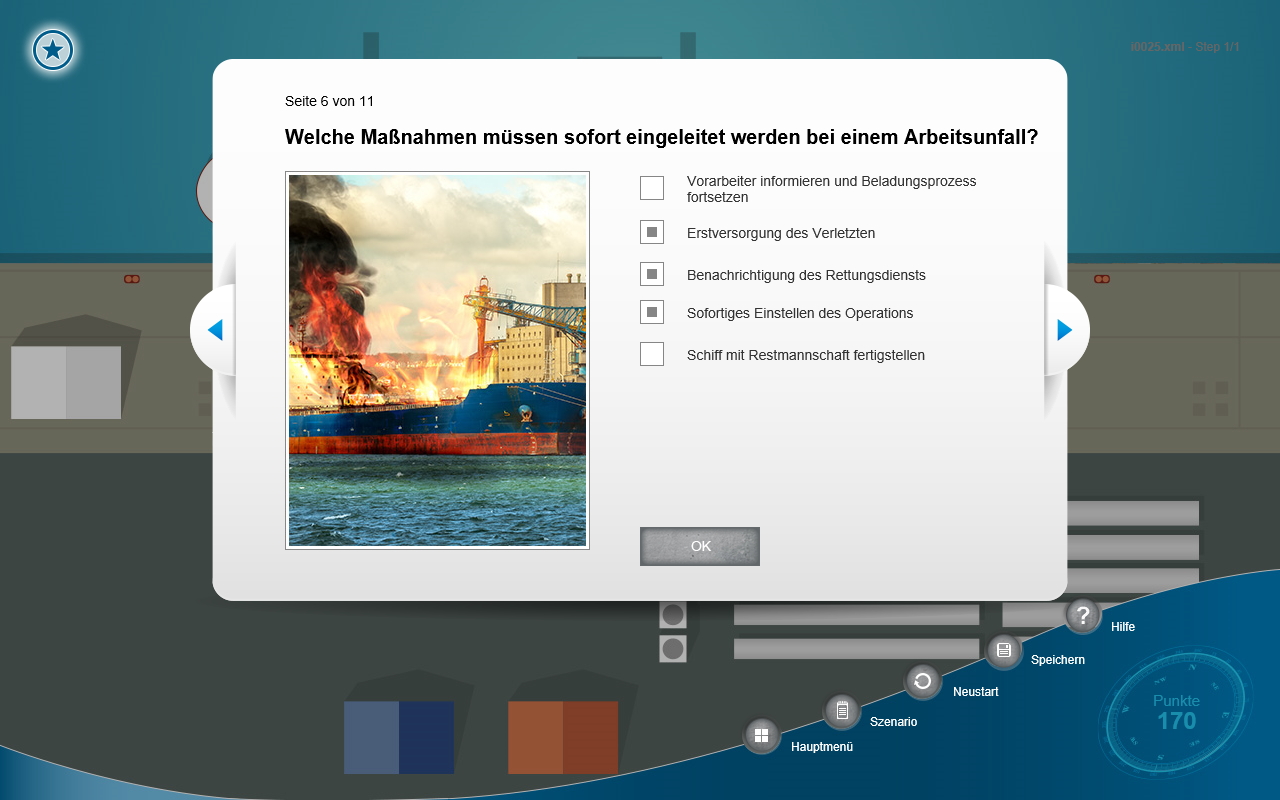
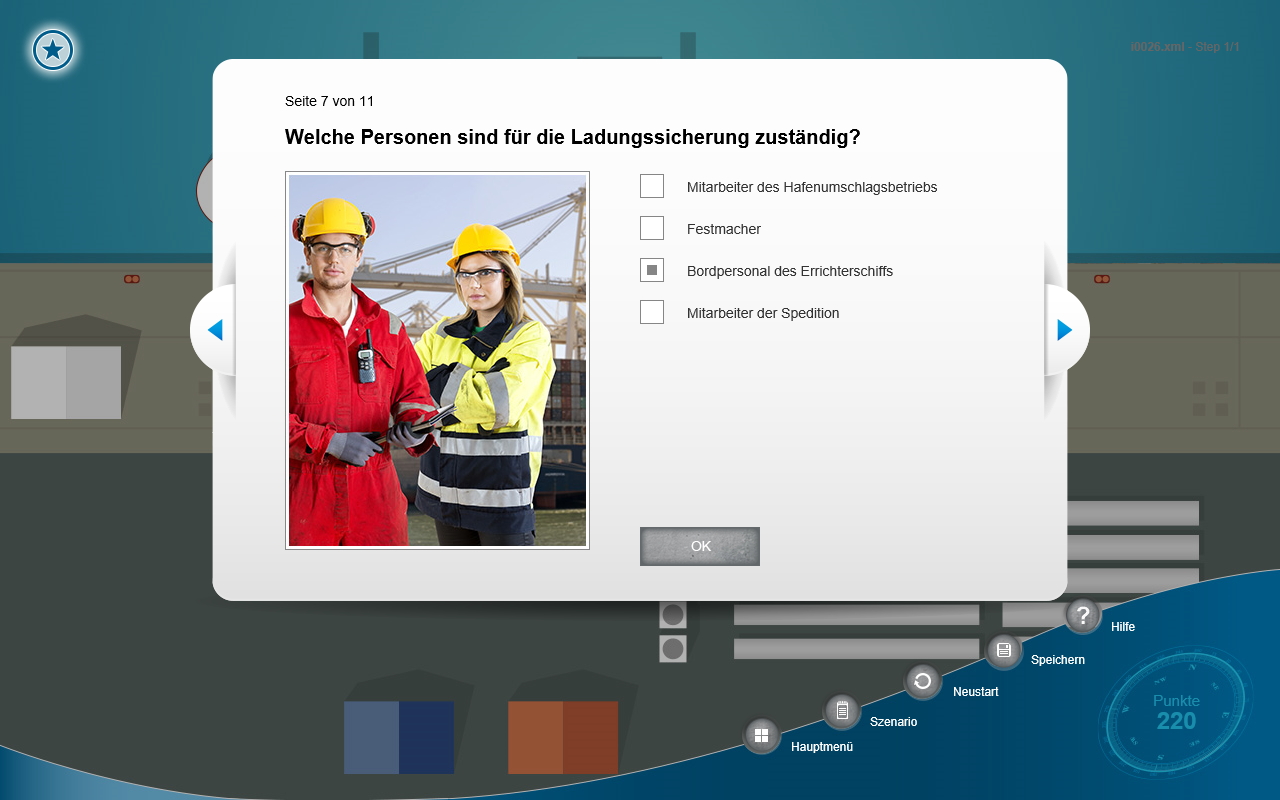
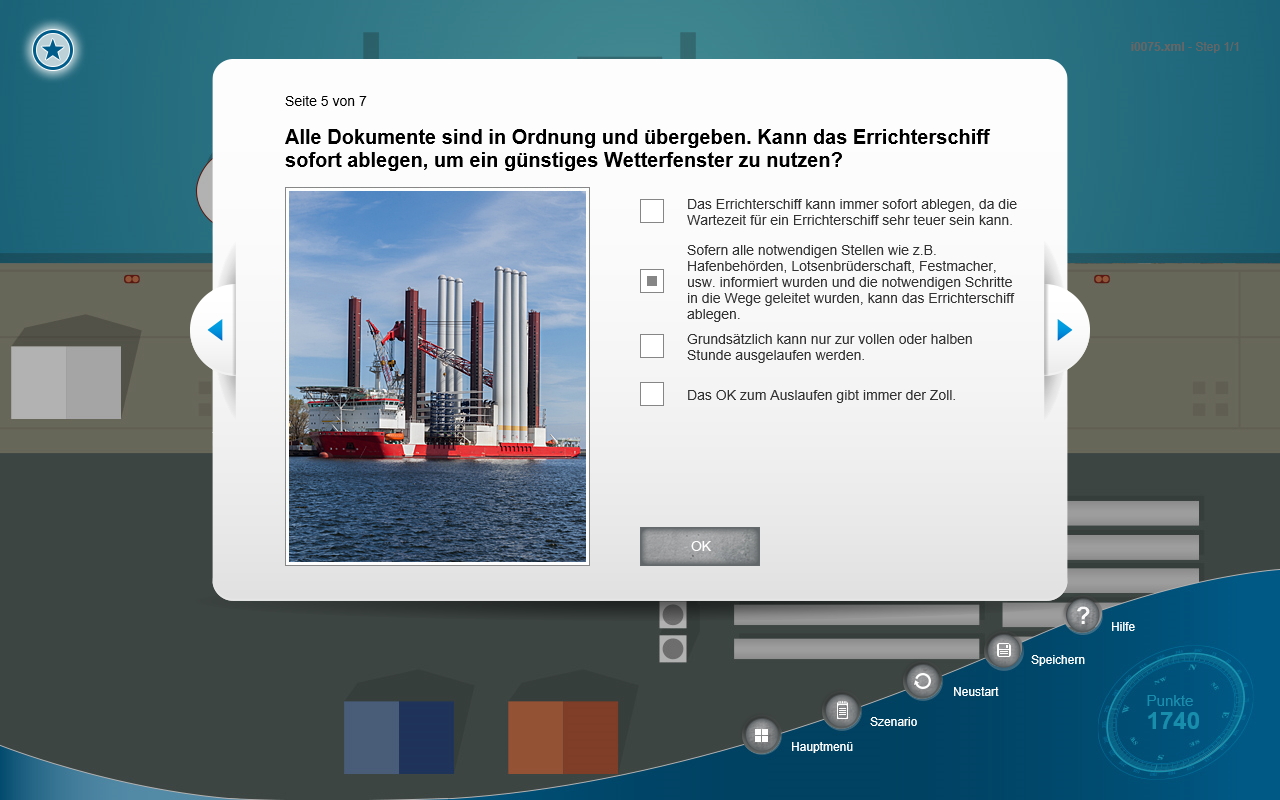
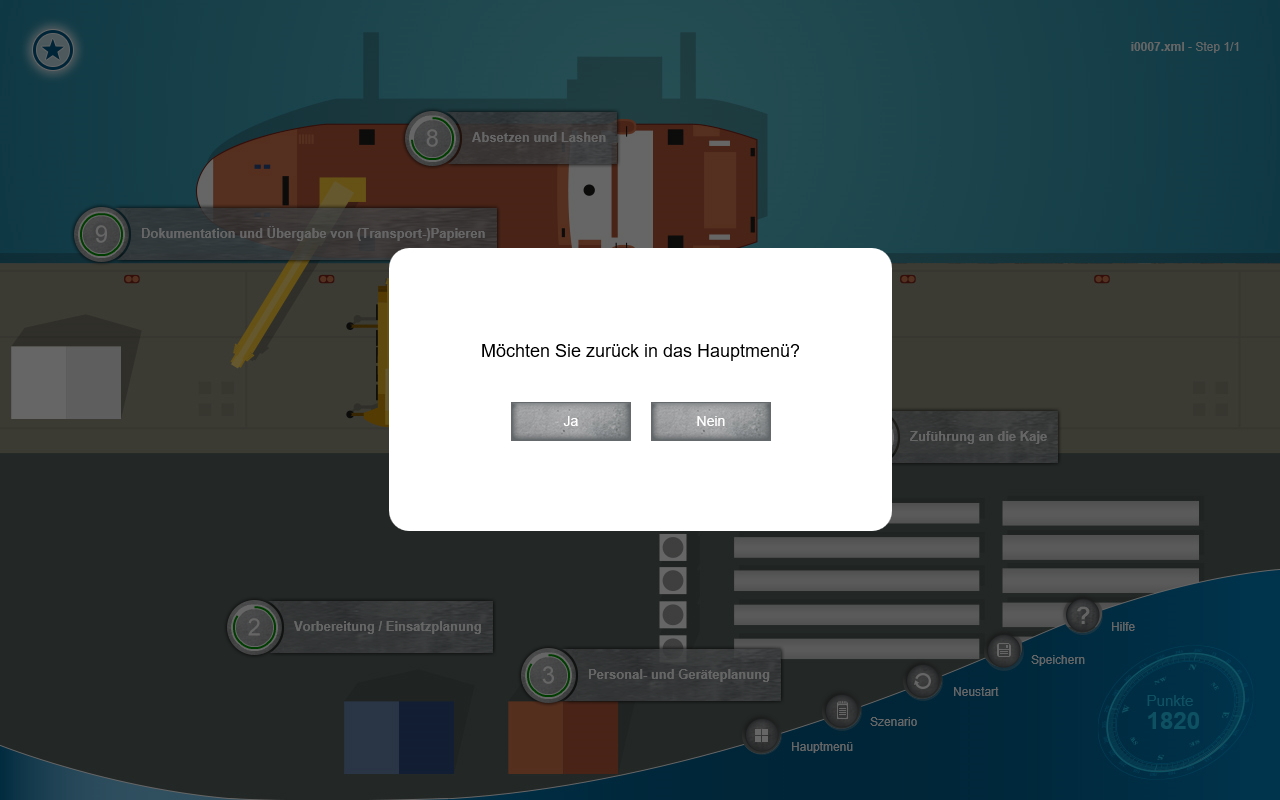

How it works
The player is introduced to the game and then chooses a role and the level of difficulty of the tasks to be solved.
Based on this selection, the player is presented with a map of the harbour area on which specific points can be selected (if the player has selected the difficulty level “Beginner”, only one point can be selected, if the difficulty level “Experte” is selected, all available points can be selected).
After selecting a point on the map, the player is either offered a refined map with a further point selection or sees a list of modules that represent different areas of knowledge.
Once a module has been selected, the player is offered a series of tasks to solve and for which he receives points.
After he has solved all tasks, the next module is presented until all modules of a location are solved.
Then the next location follows with the same logic until all locations are played through and the end of the game is reached.
There are two different forms of learning modules: In the normal mode there is as much time as you want to solve the tasks, while in the time-limited mode one clock runs backwards, and the player has to solve all tasks of the module within a certain period of time.
The player can exit or save the game at any time to resume it at a later time.
The total number of points earned is entered in a high score list, with each combination of role and difficulty level having its own high score list.
However, if the game is finished before the end without saving, the points scored so far will be lost.
In addition, there is a micro-learning mode (quiz mode) in which tasks must be solved in random order against time.
The more tasks successfully solved, the higher the score for the player at the end.
There is also a separate high score area for this.
Game developers are supported by an author tool. With the author tool it is possible to create new games or modify existing games.
Any locations, information pages and task pages can be created and provided with text, graphics and audio.
This enables organizations to create and maintain their own learning modules and to adapt them to changing requirements.
